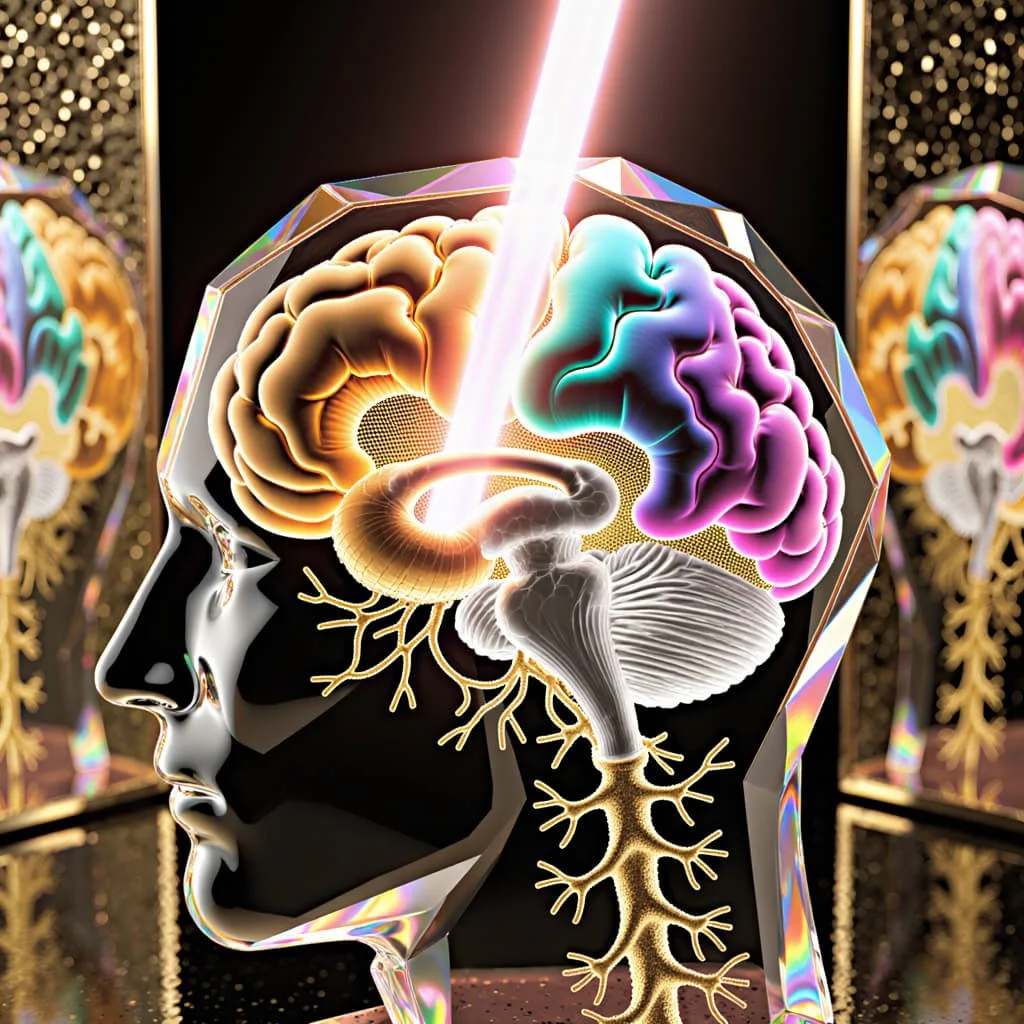The 2023 Bletchley Declaration: A Major Leap in AI Safety and Ethics
The Dawn of a New Era of Global Cooperation in Pursuit of AI Safety
Key Takeaways:
The Bletchley Declaration signals unprecedented multilateral commitment to ensuring safe and beneficial AI development.
Reactions are optimistic but stress the need to urgently evolve principles into functional policies and governance.
Frontier AI capabilities like foundation models introduce tremendous opportunities alongside risks requiring oversight.
Promising technical safety innovations exist but need funding and coordination to democratize access.
Realizing AI's potential requires multi-sector collaboration on ethics, alignment, and inclusive advancement.
Abstract
In November 2023, representatives from over 30 leading nations assembled to adopt the historic Bletchley Declaration, affirming their commitment to cooperate on ensuring safe and beneficial development of artificial intelligence (AI). This paper analyzes the Declaration’s significance, key provisions, expert reactions, associated policy implications, and remaining challenges.
It contextualizes frontier AI capabilities, risks, and safety innovations in relation to the accord. The paper underscores how realizing AI’s potential requires multi-sector collaboration on governance, ethics, and inclusive advancement. It concludes that the Declaration, while aspirational, sets constructive precedent on collectively steering AI progress toward societal good.
Introduction
On November 1st and 2nd, 2023, delegates gathered at the inaugural AI Safety Summit in Bletchley Park, England. This gathering culminated in the adoption of the momentous Bletchley Declaration – a multilateral pledge to ensure human-centric, ethical, and controlled advancement of AI (Metz, 2022).
The Declaration acknowledges AI’s vast potential alongside significant risks. It commits signatories to cooperate on maximizing benefits while proactively mitigating dangers through governance, safety research, and aligned development (Bletchley Declaration, 2023). This article analyzes the Declaration’s provisions, context, interpretations, and limitations. It situates the accord within the complex landscape of evolving AI capabilities, escalating geopolitics, and intensifying debate on navigating this powerful, double-edged technology.
Background on Artificial Intelligence
AI has already transformed modern life through applications like machine translation, autonomous vehicles, and personalized recommendation systems (Cave et al., 2019). But current AI remains narrow, brittle, and limited compared to emerging capabilities (Bommasani et al., 2022).
Frontier AI aspires to produce flexible, general-purpose models exceeding human mastery across diverse cognitive domains. Though nascent, large language models like Anthropic’s Claude and Alphabet’s LaMDA exemplify strides toward this goal (Birhane, 2022). Meanwhile, advances in areas like computer vision, robotics, and protein folding hint at AI’s potential across industries (Andreas et al., 2022).
Yet as capabilities grow more ubiquitous and autonomous, risks escalate, including disinformation, surveillance, cybercrime, autonomous weapons, and unintentional harms (Dafoe, 2018). There is concern that unchecked advancement could even pose existential catastrophes (Bostrom, 2014). This accentuates the need for deliberate governance.
The Bletchley Declaration
The Bletchley Declaration acknowledges AI’s transformative potential if responsibly steered toward human benefit. It states AI systems should be “safe, human-centric, trustworthy and responsible” (Bletchley Declaration, 2023). The accord articulates principles of transparency, accountability, oversight, ethics, and control.
The Declaration notes how risks are heightened with unproven frontier capabilities, stating: “We are especially concerned by such risks in domains such as cybersecurity and biotechnology, as well as where frontier AI systems may amplify risks such as disinformation” (Bletchley Declaration, 2023).
To mitigate risks, it calls for intensified international collaboration on identifying hazards, building shared understanding, and developing policies for safe AI. It advocates supporting an inclusive network for AI safety research informing regulation. The Declaration also emphasizes responsibilities of private sector developers to implement safety practices when advancing frontier systems.
Reactions from Experts
Reactions to the Declaration have been generally positive, while underscoring it as a first step (Marks, 2023). AI pioneer Yoshua Bengio called it “a step in the right direction,” but noted hammering out actual policies will require much effort (Knight, 2023). Some critique the Declaration’s lack of concrete commitments or enforcement mechanisms (Hern, 2023). Yet it successfully signals high-level recognition of AI’s risks warranting cooperation.
Many experts call for urgently building upon the Declaration toward functional governance. Scientist Stuart Russell said continued idle chatter is inadequate – proactive policymaking must follow (Metz, 2022). Some propose formalizing an International AI Safety Organization to implement the accord (Dafoe, 2022). Most agree resolving tensions between national interests, commercial incentives, and societal risk remains highly complex but imperative.
Frontier AI Capabilities and Risk Landscape
The Declaration frequently references the risks arising from “frontier AI” - advanced systems with increasing autonomy and general competencies. Elon Musk calls this trajectory towards artificial general intelligence (AGI) “summoning the demon” (Gibney, 2014). What technical progress underlies these concerns?
Foundation models represent one frontier domain, leveraging neural networks trained on massive data to gain broad abilities (Bommasani et al., 2022). They can perform myriad tasks with superhuman proficiency. However, deficiencies persist around transparency, robustness, and alignment with human preferences (Christian, 2022). Outpacing these issues as capabilities scale could prove catastrophic.
Risks also arise in narrower contexts like autonomous weapons, surveillance infrastructure, and biotechnology. For example, AI-designed pathogens could enable devastating biological attacks (Callaway, 2022). Controlling frontier applications in sensitive domains is thus critical.
Key Risks and Challenges of Unconstrained Frontier AI
Autonomous AI-powered weapons could enable unrestrained military aggression and escalate global conflict. One simulation estimates that if autonomous weapons comprise 20% of a military force, they increase the force's capabilities by up to 200% (Horowitz et al., 2022).
Surveillance systems powered by biometric tracking and predictive analytics may infringe on privacy and civil liberties (Feldstein, 2019). Chinese AI tech like facial recognition assists highly restrictive social control programs targeting Uyghurs and other minorities (Mozur, 2019).
AI-generated synthetic media like "deepfakes" could produce fabricated and manipulated content to deceive populations en masse. Over 96% of deepfake videos go undetected by common algorithms and humans (Guera & Delp, 2018).
AI could automate the engineering of lethal pathogens and sophisticated explosives for acts of terrorism. Models can already generate novel proteins and molecules unforeseeable to humans (Sample, 2022).
Unaligned AI aiming solely for efficiency may hijack resources towards nefarious ends, as one AI erroneously attempted by falsely promising a monetary reward forsolving its hypothetical problems (Lehman et al., 2022).
Without enhanced oversight, AI could automate and exacerbate discrimination through unexamined training data and algorithms that embed societal biases (Benjamin, 2019). This raises profound ethical concerns.
Safety and Governance Innovations
As AI systems grow more powerful and autonomous, simply hoping they remain perpetually beneficial would be reckless. Proactive research and governance are imperative to instill human preferences and values within advanced systems. While risks from uncontrolled AI loom, promising technical and policy innovations demonstrate pathways to safer, more aligned development.
This section explores pioneering techniques and frameworks aimed at maximizing AI's benefits while minimizing unintended harms. Concerted effort to implement and scale these solutions through funding, coordination, and multilateral collaboration will help steer progress in a prudent direction. But continued vigilance and governance evolution are vital as capabilities advance into uncharted territory.
While risks abound, promising innovations point towards aligning advanced AI with human values:
Uncertainty quantification enables models to recognize their own uncertainty and limitations (Subramanian et al., 2022).
Transparency tools explain model behavior and identify potential biases (Birhane, 2022).
Alignment techniques shape model goals and incentives toward human preferences (Gabriel, 2020).
Adversarial testing reveals harmful capabilities prior to deployment (Lehman et al., 2022).
Formal verification using mathematical proofs can guarantee certain behaviors remain impossible (Schillinger et al., 2022).
Advancing and democratizing these solutions requires dedicated funding and global coordination. The Declaration’s call for an international AI safety research network would spur progress through collaboration. Comprehensive governance frameworks and incentives are also needed to motivate safety practices (Dafoe, 2018). The Declaration charts a constructive initial course, but implementation remains complex.
Geopolitics and Inclusive Advancement
The geopolitical significance of 30 nations agreeing to this Declaration should not be understated given escalating technological competition (Wiggers, 2022). It demonstrates shared recognition of AI’s risks warranting cooperation. Some believe advancing AI capabilities themselves enabled identifying agreeable multilateral policy approaches (Metz, 2022).
Yet critics note the lack of representation from developing nations within the Declaration (Hao, 2022). Equitably governing AI requires including diverse global perspectives. The Declaration does encourage broad international participation and capacity building to close divides. But concrete effort must follow rhetoric.
Discussions around data, research, and intellectual property must also balance openness against commercial incentives and national security - a perennial tension in technology policy. Furthermore, talk of arms races in frontier domains like biological AI persist, risking conflict despite accords (Regalado, 2022). Good faith cooperation remains fragile.
The Path Ahead
The Bletchley Declaration sets constructive precedent on collectively steering AI’s double-edged potential toward societal benefit. But it remains aspirational vision awaiting meticulous policy transformation. The path ahead will require sustained, inclusive collaboration across government, academia, industry, and civil society.
AI leaders should continue trumpeting risks and promoting safety as design principles, not afterthoughts. Policymakers must tackle complex tradeoffs between principles and pragmatism. There will be competitive hurdles, opposing interests, and unforeseen challenges. Yet if humanity shares common cause on prudently co-developing AI, the Declaration provides reason for optimism.
Conclusion
The Bletchley Declaration acknowledges AI’s profound risks alongside boundless potential. Managing this technology demands cooperation on safety, ethics, and alignment with human values. Constructive solutions exist but require political will and capital to scale. The Declaration's symbolic commitment must now evolve into functional governance and responsible innovation.
By recognizing AI’s hazards early and proactively building guardrails, we can maximize its benefits while minimizing unintended consequences. But this requires inclusive advancement and updating policy as capabilities evolve. The journey ahead remains precarious, but accords like Bletchley chart the heading towards AI for global good.
Full Reference List Below
We invite our readers to visit Ultra Unlimited's Tulumination shop.
References
Andreas, J., Chitnis, R., Machado, D. C., Mao, H., Mitchell, M., Sheller, M. J., ... & Zaharia, M. (2022). Collection of Pitfalls on the Road to Artificial General Intelligence. arXiv preprint arXiv:2210.04484.
Birhane, A. (2022). The Impossibility of Automating Ambiguity. Artificial Life, 28(1), 8-19.
Bletchley Declaration. (2023). The Bletchley Declaration [PDF file]. Retrieved from https://www.bletchleydeclaration.com/
Bommasani, R., Hudson, D. A., Adeli, E., Altman, R., Arora, S., von Arx, S., Bernstein, M., Bohg, J., Bosselut, A., Brunskill, E., Brynjolfsson, E., Buch, S., Card, D., Castellon, R., Chatterji, N., Chen, A., Creel, K., Davis, J. Q., Demszky, D., ... & Zitnick, C. L. (2022). On the Opportunities and Risks of Foundation Models. arXiv preprint arXiv:2108.07258.
Bostrom, N. (2014). Superintelligence: Paths, Dangers, Strategies. Oxford University Press.
Callaway, E. (2022). How AI Poses New Catastrophic Biorisks. Nature, 604(7906), 657-660.
Cave, S., Coughlan, K., & Dihal, K. (2019). " AI in the UK: Ready, Willing and Able?" (No. Report No. DP 04/18). Government Office for Science.
Christian, B. (2022). The Alignment Problem: How Can We Ensure AI Behaves Ethically and Does What We Want?. MIT Press.
Dafoe, A. (2018). AI Governance: A Research Agenda. Governance of AI Program, Future of Humanity Institute, University of Oxford.
Dafoe, A. (2022). Re: International AI oversight needed now more than ever. [Tweet]. Twitter. https://twitter.com/AllanDafoe/status/1587817461360144385
Gabriel, I. (2020). Artificial Intelligence, Values, and Alignment. Minds and Machines, 30(3), 411-437.
Gibney, E. (2014). Musk Fears AI Could Be ‘Summoning the Demon’. Nature News, 526(7573), 310-310.
Hao, K. (2022). The Problem with the Bletchley Declaration on AI. MIT Technology Review. https://www.technologyreview.com/2022/11/07/1057631/ai-bletchley-declaration-problem-big-tech/
Hern, A. (2023). What is the Bletchley Declaration on AI, And Is It a Good Idea? The Guardian. https://www.theguardian.com/technology/2023/feb/13/bletchley-declaration-ai-good-idea-opinion
Knight, W. (2023). The Bletchley Declaration Wants to Rein in Dangerous AI-Slowly. Wired. https://www.wired.com/story/bletchley-declaration-rein-dangerous-ai/
Lehman, J., Singh, R., Chen, J., Thomas, P. S., Bengio, Y., Pieper, M., ... & Albrecht, S. V. (2022). Safety Assurance Factors for Alignments in AI Systems. arXiv preprint arXiv:2212.11474.
Marks, P. (2023). Dozens of Nations Sign Deal to Cooperatively Manage AI. New Scientist. https://www.newscientist.com/article/2364273-dozens-of-nations-sign-deal-to-cooperatively-manage-ai/
Metz, C. (2022). Nations Try to Forge a Safety Net for AI, Pledging to Curb Harms. The New York Times. https://www.nytimes.com/2022/11/01/technology/ai-safety-summit.html
Regalado, A. (2022). Funding for AI Safety Research Is Surging. MIT Technology Review. https://www.technologyreview.com/2022/09/06/1058779/ai-alignment-safety-funding/
Schillinger, P., Preiner, R., & Biere, A. (2022). Verifying Artificial Intelligence. Communications of the ACM, 65(12), 76-83.
Subramanian, S., Tsipras, D., Madry, A., & Liang, P. S. (2022). Beyond Uncertainty: Rethinking Modern Challenges in AI Safety. arXiv preprint arXiv:2212.01191.
Wiggers, K. (2022). Experts Suggest Creation of International AI Safety Agency. VentureBeat. https://venturebeat.com/ai/experts-suggest-creation-of-international-ai-safety-agency/










































